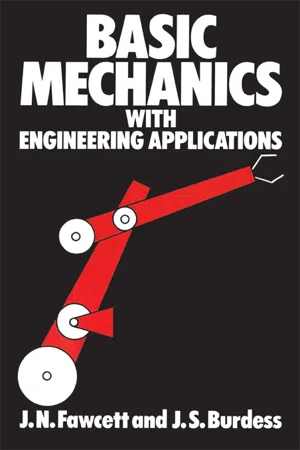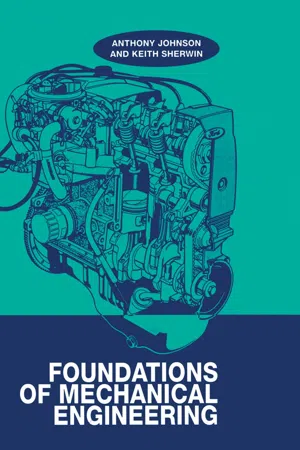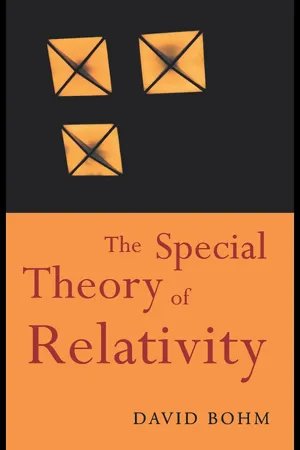Physics
Change of Momentum
Change of momentum refers to the difference between an object's initial momentum and its final momentum. It is calculated by subtracting the initial momentum from the final momentum. In physics, this change can occur due to the application of a force over a period of time, resulting in an acceleration or deceleration of the object.
Written by Perlego with AI-assistance
7 Key excerpts on "Change of Momentum"
Learn about this page
Index pages curate the most relevant extracts from our library of academic textbooks. They’ve been created using an in-house natural language model (NLM), each adding context and meaning to key research topics.
- eBook - ePub
Biomechanics of Human Motion
Applications in the Martial Arts, Second Edition
- Emeric Arus, Ph.D.(Authors)
- 2017(Publication Date)
- CRC Press(Publisher)
Change in velocity means acceleration or deceleration by a force that was applied. Thus, a body’s momentum can be changed by altering either its mass or its velocity.The equation of the linear momentum is p = m ⋅ v or kg ⋅ m/s. Δp /Δt = F = m ⋅ Δv /Δt = m ⋅ a . In the absence of F , Δp = 0 or p = constant. Newton’s third law can also be used in relation to momentum. In this case, the force of the action is equal and opposite to the reaction force and the rate of change in momentum produced by the action of the force on the body is equal and opposite to the rate of Change of Momentum produced by the reaction force on the other body. So, in this case, the Change of Momentum created by the first object will result in the same momentum changes by the second object.8.5 IMPULSIVE FORCES, COLLISIONS (IMPACT)
The effect of the applied force and the time over which the force is applied is called impulsive force or just impulse. These impulsive forces occur when two or more objects collide. In sport, there are many examples. A tennis player or golf player hits the ball, a karateka hits an opponent or hits the punching bag, and a fencer executes a straight cut on the mask of the opponent and so on. The equation of the impulse is J = F Δt or N ⋅ s.In physics, we talk about the impulsive force for a given time interval, which is equal to the change in momentum produced over that time interval, that is, J = m (vThere are many different kinds of impulses in science. In sports, there are three different kinds of impulses:f– vi), where m is the mass, vfrepresents the final velocity, and virepresents the initial velocity. This conception of the change in momentum is derived from Newton’s second law and is known in sports as the impulse–momentum relationship.- Controlled impulse refers to the muscle effort and bone leverage, for example, striking or kicking.
- Transmitted impulse
- eBook - ePub
- W. Bolton(Author)
- 2015(Publication Date)
- Routledge(Publisher)
Chapter 6 Dynamics6.1 Introduction
Dynamics is the study of objects in motion. This chapter thus follows on from Chapter 4 , where the terms and equations used in describing linear motion were introduced. Here we now consider the forces responsible for motion and deal with the forces and linear momentum involved with linear motion.6.2 Newton's laws
The fundamental laws involved with the study of dynamics are Newton’s laws of motion. These can be stated as:- Law 1 A body will continue in a state of rest or uniform motion in a straight line unless it is compelled to change that state by an externally applied force .Thus if an object is at rest then, unless a resultant force is applied to it there will be no motion. If an object is moving with a constant velocity then it will keep on in this motion until some externally applied force causes it to change its direction of motion and/or the magnitude of its velocity.
- Law 2 The rate of Change of Momentum of a body is proportional to the applied external force and takes place in the direction of action of that force .Momentum is defined as being the product of mass m and velocity v of a body. It is a vector quantity with the basic unit of kg m/s. The second law can thus be written as:Force is proportional to the rate of Change of Momentum (mv )The unit of force, the newton (N), is defined so that when the mass is in kg and the velocity in m/s, the force is in N and so:force = rate of Change of Momentum (mv )If mass m is constant, the above expression becomes:force = m × rate of change of v = mawhere the rate of change of velocity is the acceleration a. Thus an alternative way of expressing the law is: The acceleration of a body is proportional to the applied external force and takes place in the direction of action of that force.
- eBook - ePub
- J Jones, J Burdess, J Fawcett(Authors)
- 2012(Publication Date)
- Routledge(Publisher)
6Impulse and momentumBasic Theory6.1 Linear momentumParticleLet us suppose that the absolute velocity of the particle P shown in Fig. 6.1 is ν. If the particle has mass m then the vector quantity defined byis called the linear momentum of the particle. We can see from this definition that the linear momentum vector is in the direction of ν and has a magnitude equal to mv.FIG . 6.1If p is now resolved into components px , py along the reference directions OX and OY thenMoreover, if p is differentiated with respect to time we obtaini.e. the rate of change of the linear momentum of the particle is proportional to its acceleration a. We know from Newton’s Second Law of Motion that an external force, F = ma must be applied to the particle in order to produce this acceleration.When there is no external force applied, F = dp/dt = 0, which shows that the linear momentum of the particle is constant during the motion. This represents another way of saying that when no forces act on the particle it continues to move with uniform velocity in a straight line.Impulse of a forceLet us now consider the force F which is applied to the particle and obtain the integral of F over a time interval from t1 to t2 , so thatThe vector quantity is called the impulse of the force. By substituting eqn (6.3) into eqn (6.4) and integrating we obtainThis vector relationship is presented graphically in Fig. 6.2 which shows the change in the linear momentum, Δp = p2 − p1 of the particle. This is equal to the applied impulse .FIG . 6.2Example 6.1 Figure 6.3 shows two blocks, assumed to be particles, resting on a frictionless horizontal surface. Particle P1 is moving with velocity ν0 and collides with the stationary particle P2 . Let us determine the subsequent motion of the particles. We shall assume that the impact is perfectly elastic and that no energy is lost during the impact.FIG - eBook - ePub
- A. D. Johnson(Author)
- 2017(Publication Date)
- CRC Press(Publisher)
In due course the spacecraft approaches its destination planet and needs to reduce velocity to take up orbit. The forward thrusters apply an external force against the motion, thus decelerating the spacecraft.The example of the spacecraft illustrates that the application of an external force will increase the velocity of the mass, imparting momentum by virtue of the inertia possessed by the mass. The momentum ensures that the spacecraft continues at a constant velocity. The application of an external force in the opposite direction reduces its forward speed and thus destroys its forward momentum.Since the ISC is travelling at a constant velocity during its journey it can be said to possess ‘momentum’ which can be described as:momentum = mass × velocityorand has units of kgm/s.momentum = m × v ( 3.1 )In consideration of equation (3.1) , the mass of the spacecraft will not change. As velocity increases at the start of the journey, so does momentum. During the journey velocity and, hence, momentum remain constant. This does not change until the spacecraft slows. In reducing its velocity, momentum is also reduced.3.2.2 Newton’s second law
When a body is acted upon by an external force the rate of Change of Momentum is directly proportional to the applied force and in the same direction as that force.At the start of the journey, the interstellar spacecraft, in Figure 3.1 , is stationary and is acted upon by an external force in the form of the rocket motors which accelerate the craft. After the rocket motors are cut off, the ISC will continue at a constant velocity until the thrusters are employed to decelerate the craft in preparation for orbit around the destination planet. Deceleration may be considered as negative acceleration.Whenever an external force is applied the state of momentum is changed. At the start of the journey momentum is increased from zero due to the acceleration, while at the end of the journey the ISC is slowed by the thrusters, thus reducing momentum. These changes in momentum are directly proportional to the forces applied. - eBook - ePub
- David Bohm(Author)
- 2003(Publication Date)
- Routledge(Publisher)
Momentum and Mass in RelativityWe have already seen from Eq. (16–2) that Newton’s laws of motion are not invariant to a Lorentz transformation, and that the principle of relativity therefore implies that (except in the limit as v/c approaches zero), these cannot be the correct laws of mechanics. In accordance with the notion discussed in Chapters 15 and 16, our first problem with regard to these laws is therefore to generalize them so as to obtain a new set of equations that is invariant to a Lorentz transformation.In carrying out the generalization described above, it will be convenient to write Newton’s laws in terms of the momentum p of the body. These laws then take the form(18–1)(18–2)(18–3)In a system of bodies, the total momentum P and the total mass M are given by(18–4)when mi is the mass of the ith particle and vi is its velocity. The velocity of the center of mass is(18–5)It is a well-known theorem in Newtonian mechanics that for an isolated system the total momentum satisfies the equation dP/dt=0 and P=a constant vector. Similarly, it follows from (18–3) that in such a system the total mass is also a constant.These laws, viz., the conservation of momentum and the conservation of mass, are evidently much simpler in form than are Newton’s equations, and should therefore be correspondingly easier to generalize. After doing this, we shall then go on in Chapter 21 to generalize Newton’s laws themselves.The basic idea behind our procedure is that it is essential in physical theories to be able to analyze a whole system into parts or components. Thus in a theory of a continuous medium, such as hydrodynamics, we regard the fluid as being constituted out of small elements of volume, and, in a theory which explains matter as having a discrete atomic structure, a whole system is likewise regarded as constituted out of small elements, now taken to be the atoms. In both kinds of theories we can treat the total momentum - eBook - ePub
- Richard Gentle, Peter Edwards, William Bolton(Authors)
- 2001(Publication Date)
- Newnes(Publisher)
You would probably rate the first one the easiest and the last one the most difficult. This is because the tennis ball has small mass and small velocity, whereas the bowling ball in the last case has large mass and large velocity. We found earlier in this chapter that we could think of the mass by itself as inertia, the resistance of an object to being moved, but clearly the mass and the velocity together contribute to the ‘unstopp-ability’ of a moving object. This property of a moving body is known as its momentum, given byWhat Newton found in his experiments was that the total momentum of any two balls before a collision was equal to their total momentum after the collision. If we applied this to the third situation described above, but with you standing on a skateboard, then Figure 4.2.5 shows what would happen.Figure 4.2.5 Catching a bowling ball on a skateboardAlthough you were initially at rest on the skateboard, the act of catching the fast-moving bowling ball would push you backwards slowly. The initial momentum would be mV for the ball but zero for yourself as you are at rest. The final momentum would be equal to the total mass of yourself and the ball (M + m ) multiplied by the new, small, common velocity v . The principle of conservation of momentum tells us thatThis principle applies to all collisions, however, not just those where the two bodies join together (such as catching the ball). In general the principle of conservation of momentum for two bodies colliding may be stated as(4.2.11)where u refers to velocities before the impact and v refers to velocities after the impact.This equation is very widely used as it does not only cover the case of two objects colliding, it can handle the situation where two objects are initially united and subsequently separate. Examples of this are shells being fired from guns, stages of a space rocket separating and fuel being ejected from a jet engine. Imagine the special case of two objects that are initially united and are at rest. It could be you on the skateboard again, this time holding the bowling ball. The total momentum would be zero because you are at rest. Now suppose that you throw the ball forward. This would give the ball some forward momentum but, since the total momentum must remain zero, this can only happen if you start to move backwards on the skateboard with equal backwards momentum. What has happened is that you have given the ball an impulse - eBook - ePub
- David Bohm(Author)
- 2015(Publication Date)
- Routledge(Publisher)
18
Momentum and Mass in RelativityWe have already seen from Eq. (16–2 ) that Newton’s laws of motion are not invariant to a Lorentz transformation, and that the principle of relativity therefore implies that (except in the limit as v/c approaches zero), these cannot be the correct laws of mechanics. In accordance with the notion discussed in Chapters 15 and 16 , our first problem with regard to these laws is therefore to generalize them so as to obtain a new set of equations that is invariant to a Lorentz transformation.In carrying out the generalization described above, it will be convenient to write Newton’s laws in terms of the momentum p of the body. These laws then take the formIn a system of bodies, the total momentum P and the total mass M are given bywhen mi is the mass of the ith particle and vi is its velocity. The velocity of the center of mass isIt is a well-known theorem in Newtonian mechanics that for an isolated system the total momentum satisfies the equation dP/dt = 0 and P = a constant vector. Similarly, it follows from (18–3 ) that in such a system the total mass is also a constant.These laws, viz., the conservation of momentum and the conservation of mass, are evidently much simpler in form than are Newton’s equations, and should therefore be correspondingly easier to generalize. After doing this, we shall then go on in Chapter 21 to generalize Newton’s laws themselves.The basic idea behind our procedure is that it is essential in physical theories to be able to analyze a whole system into parts or components. Thus in a theory of a continuous medium, such as hydrodynamics, we regard the fluid as being constituted out of small elements of volume, and, in a theory which explains matter as having a discrete atomic structure, a whole system is likewise regarded as constituted out of small elements, now taken to be the atoms. In both kinds of theories we can treat the total momentum






